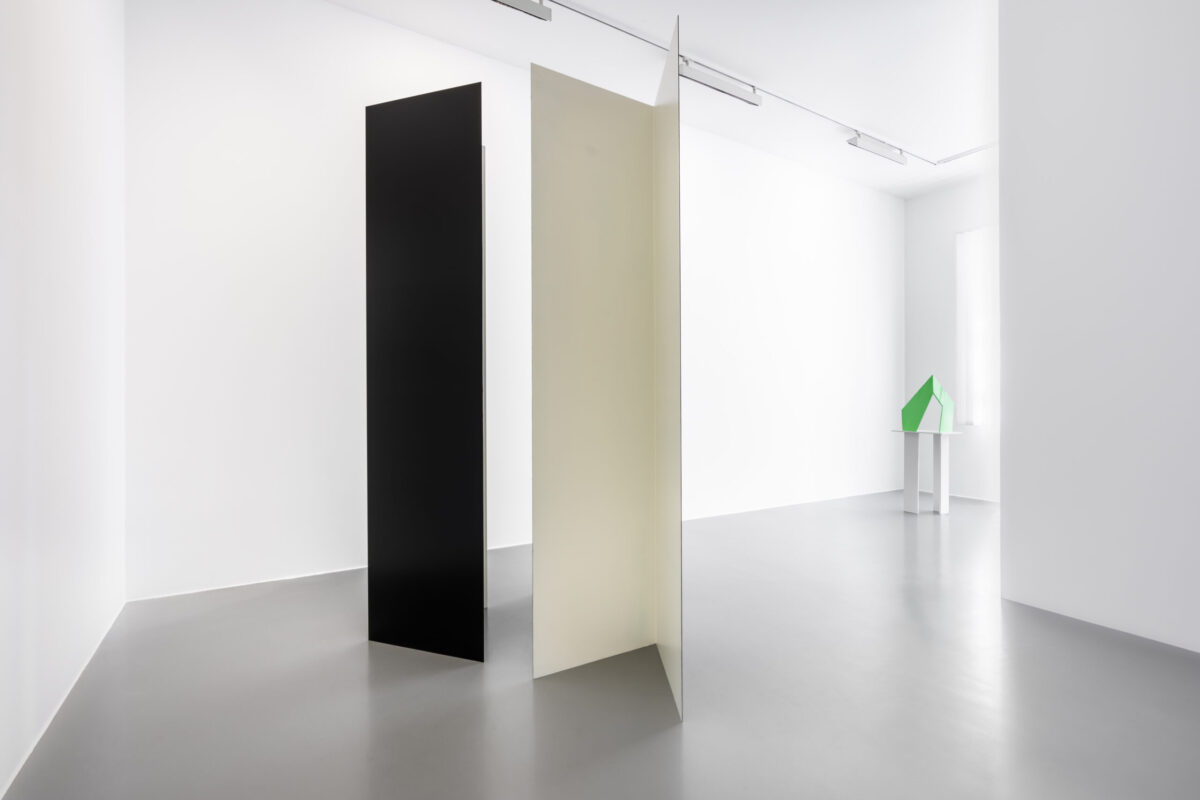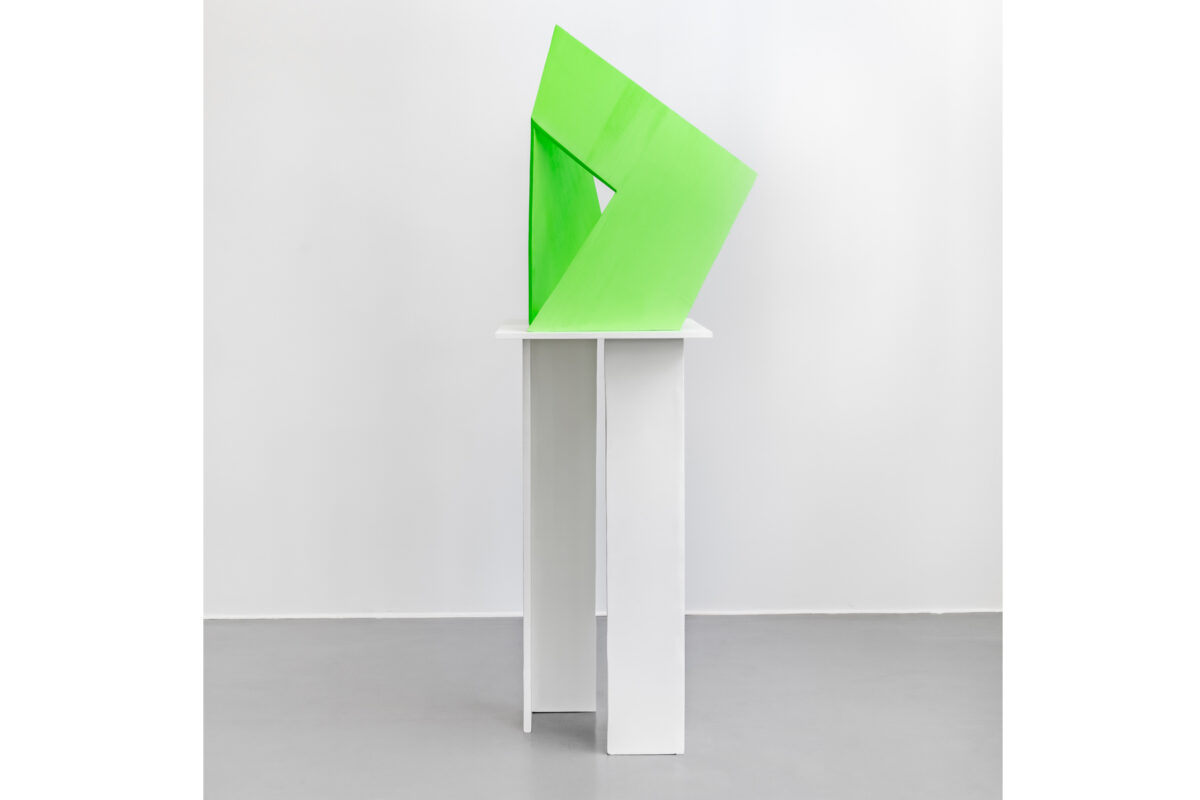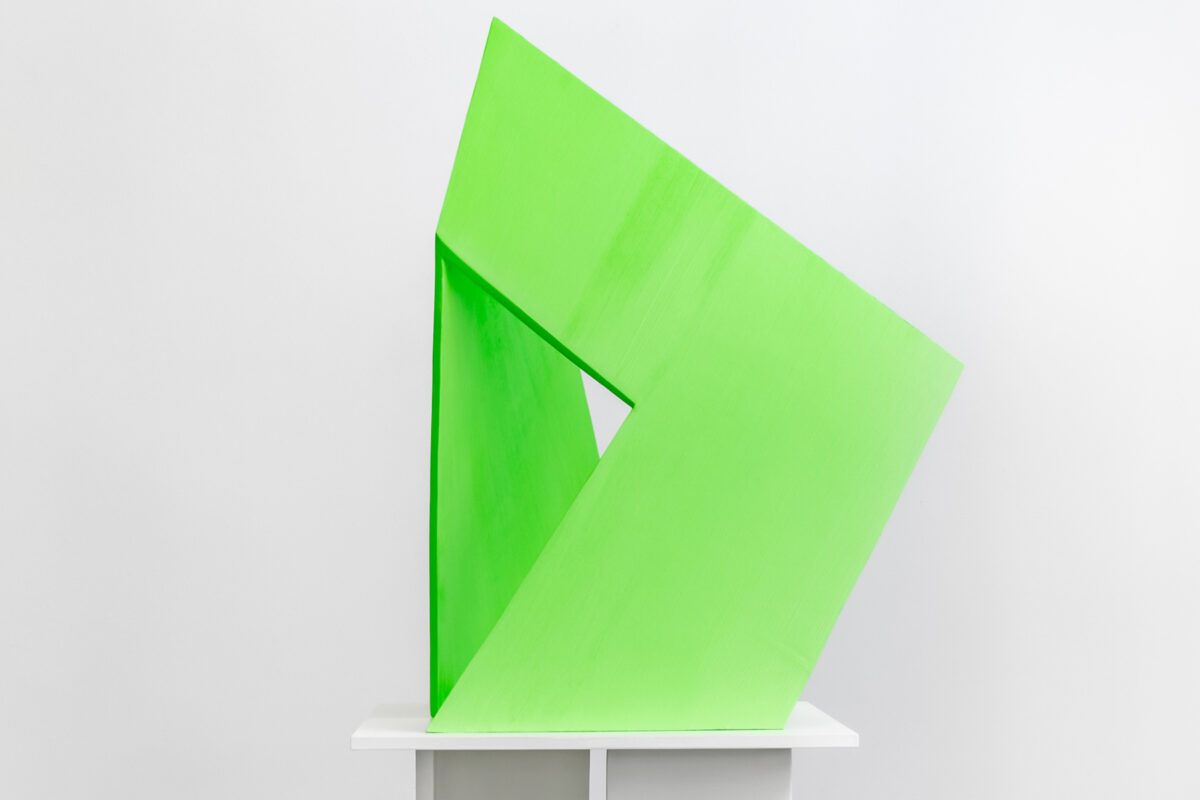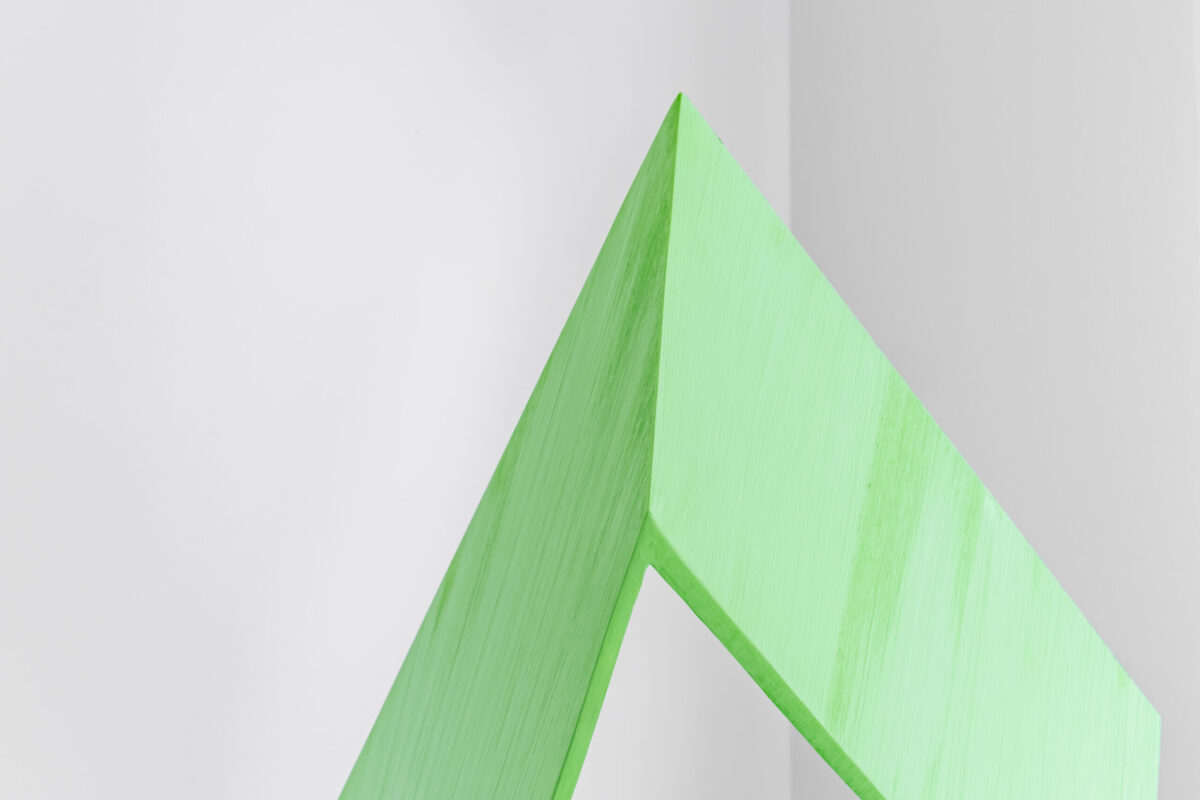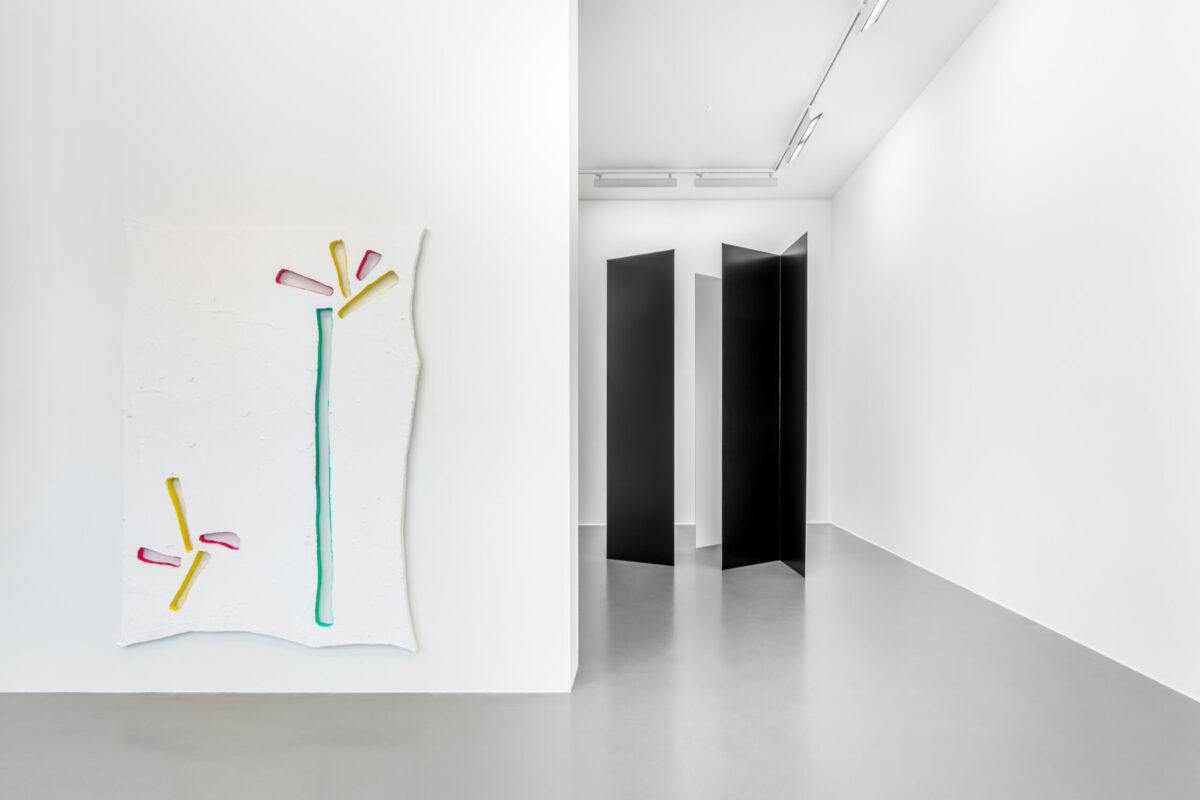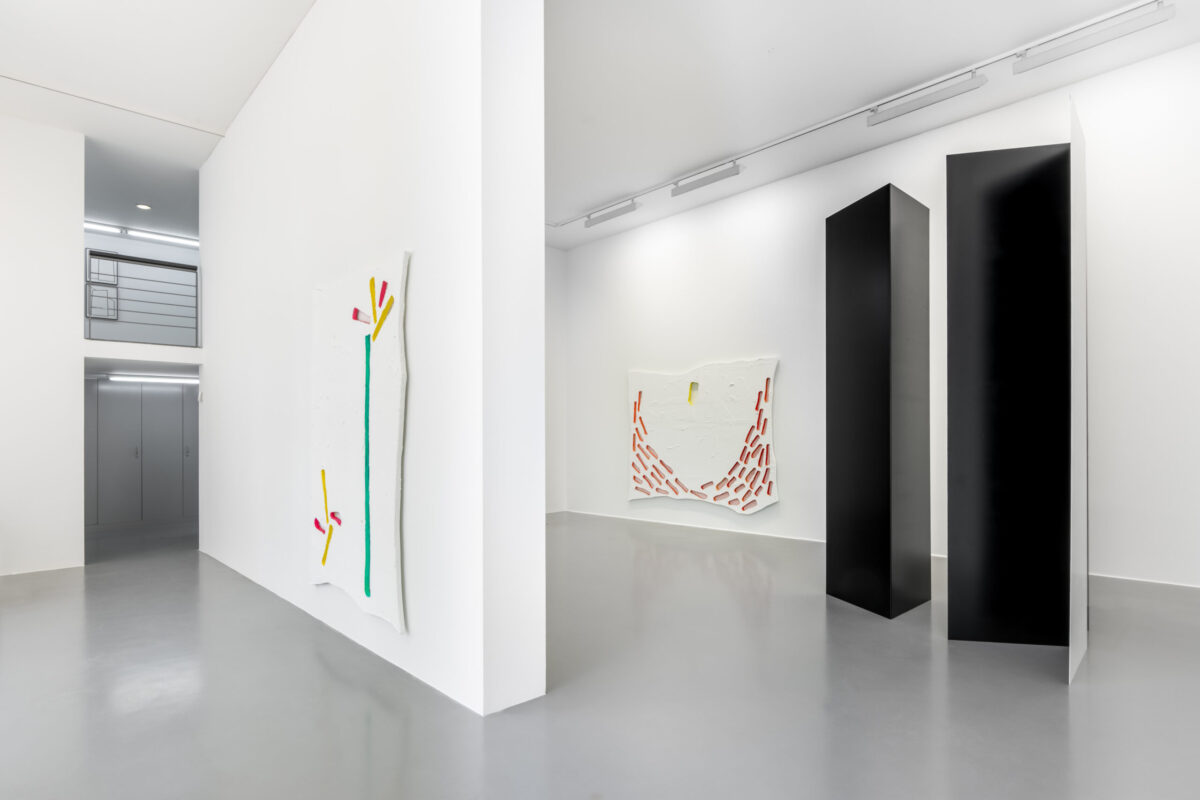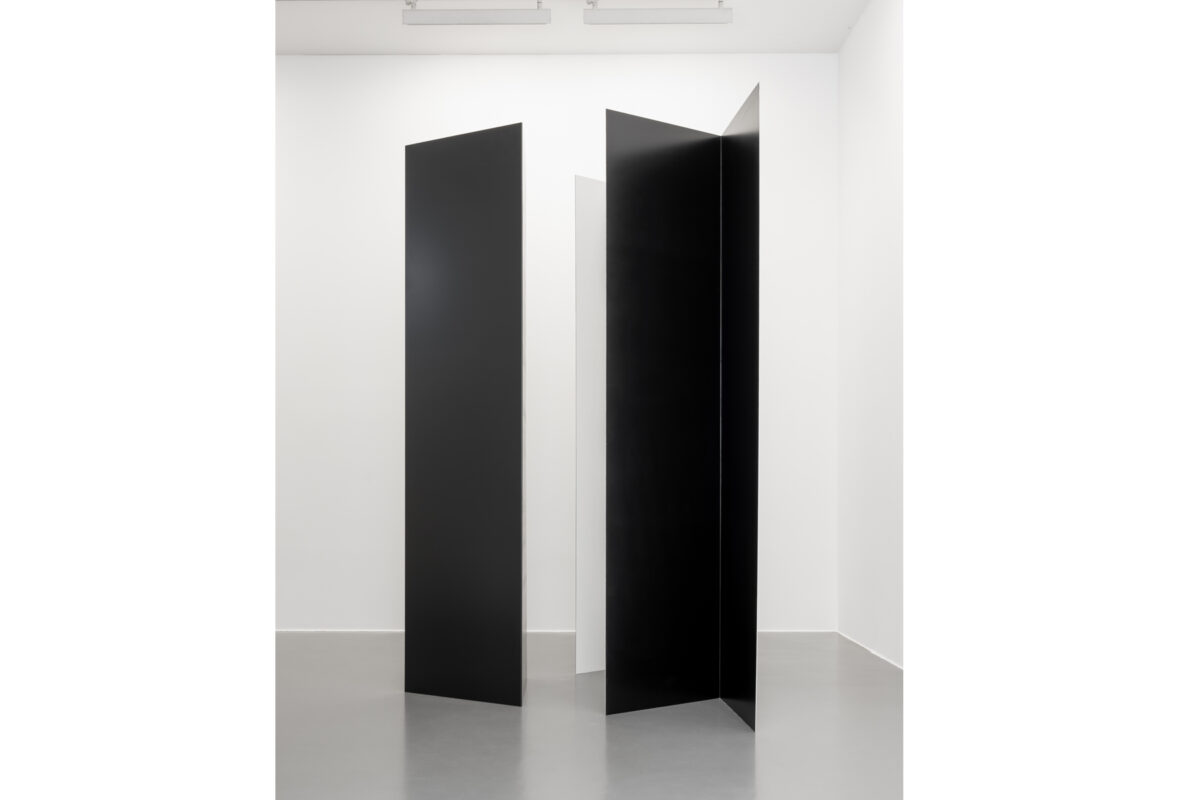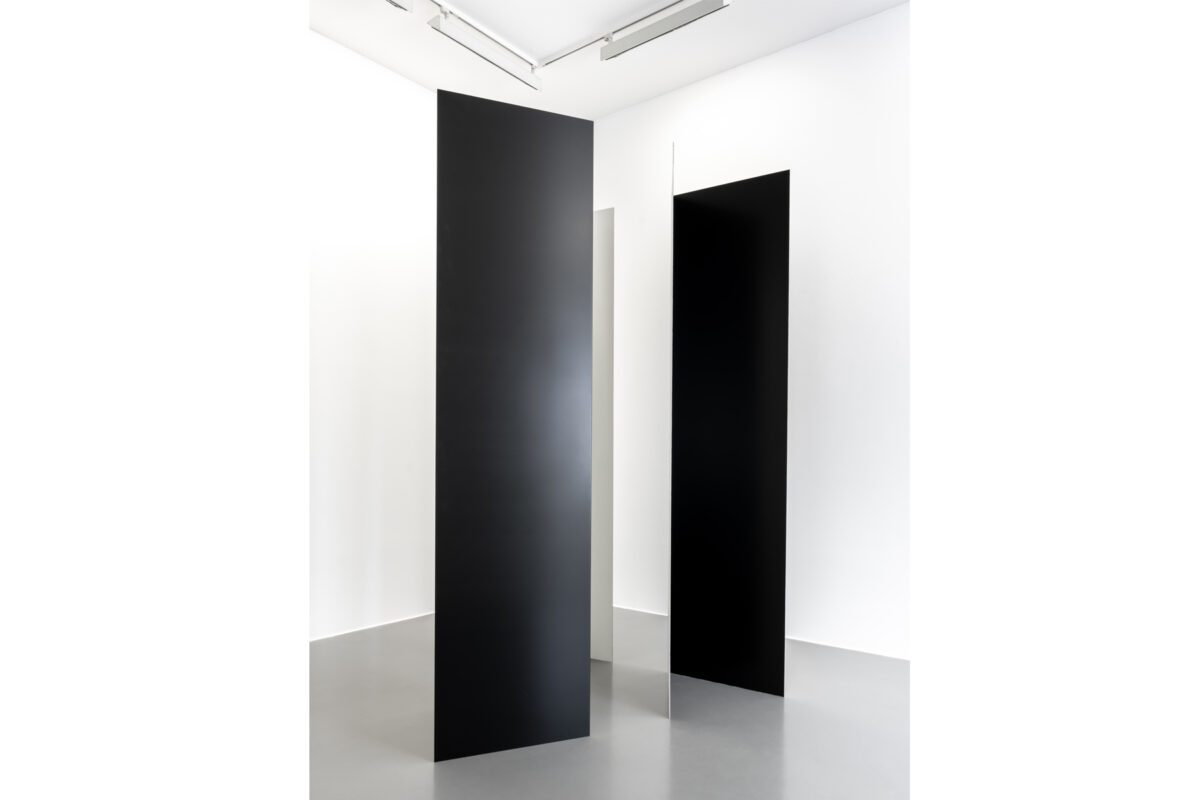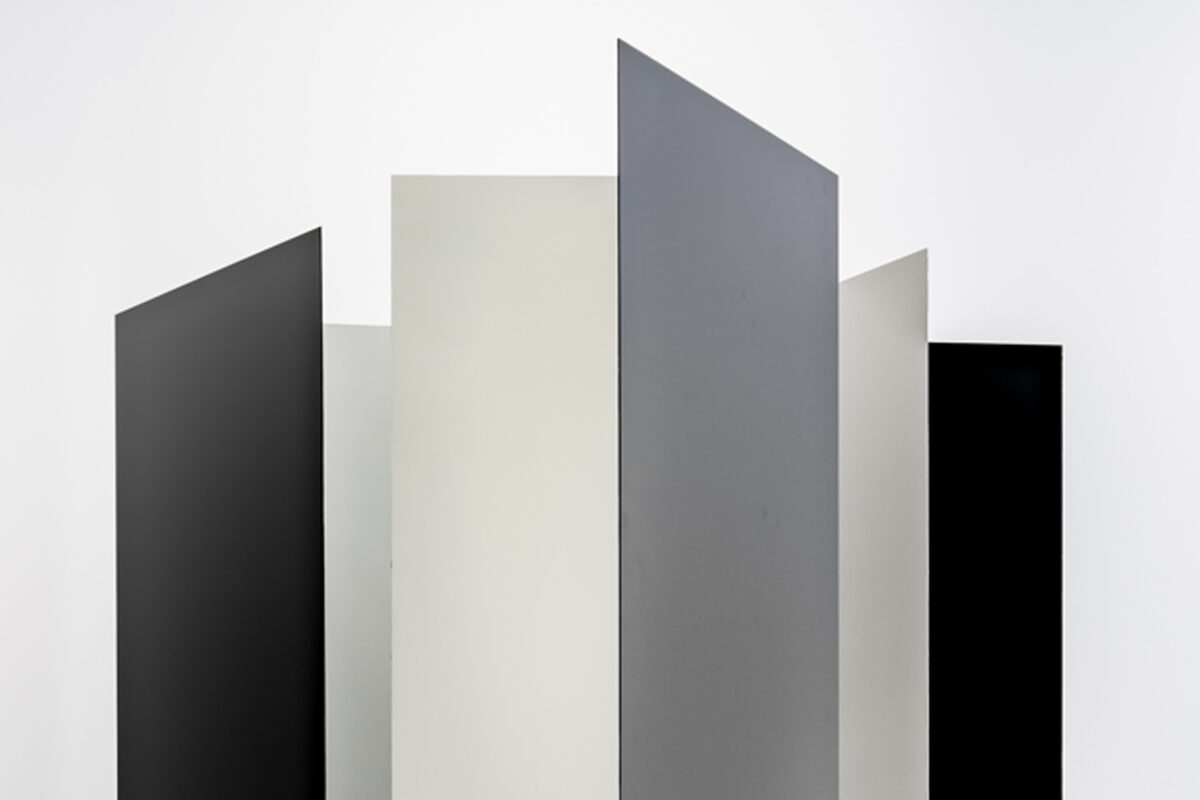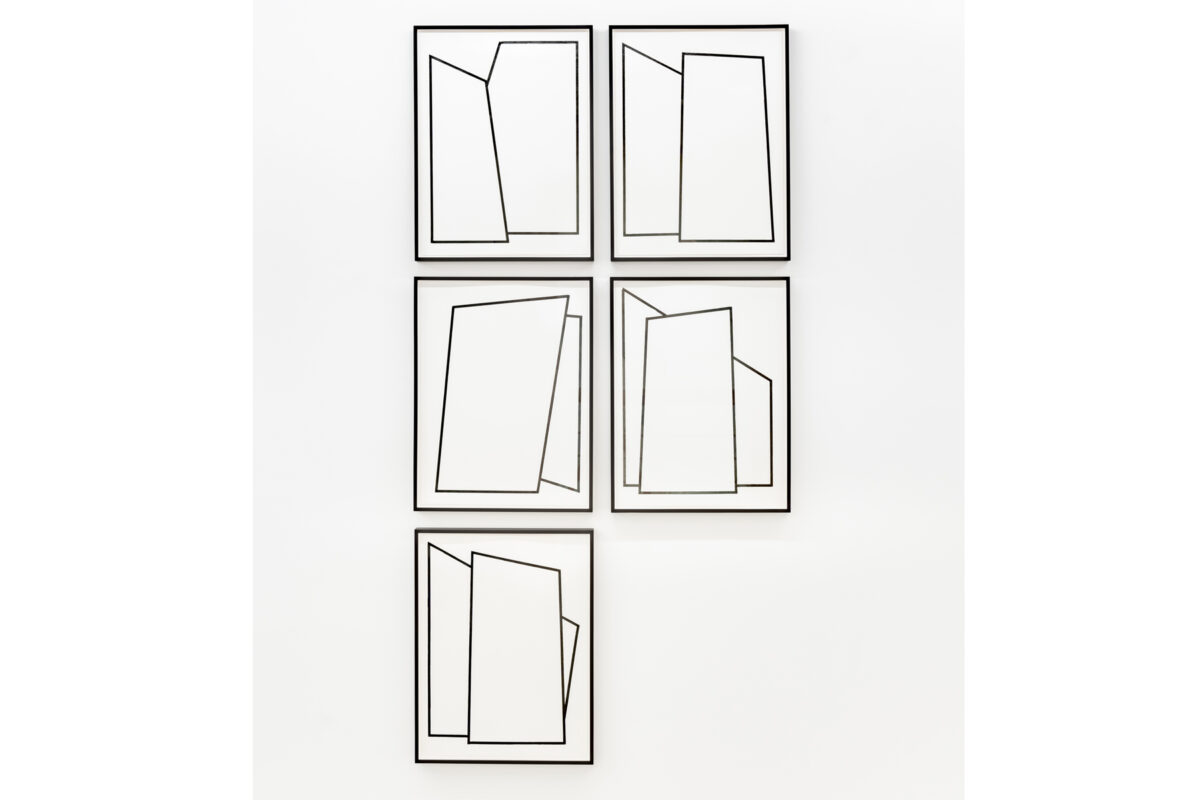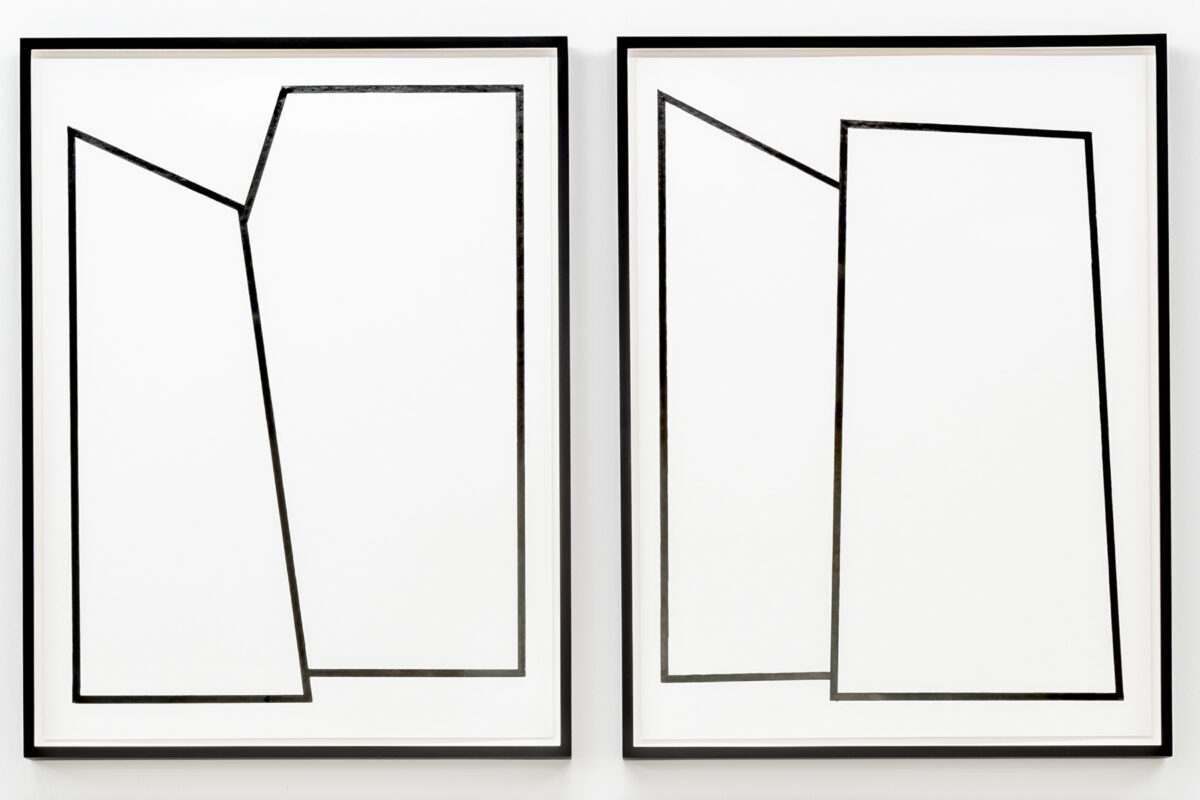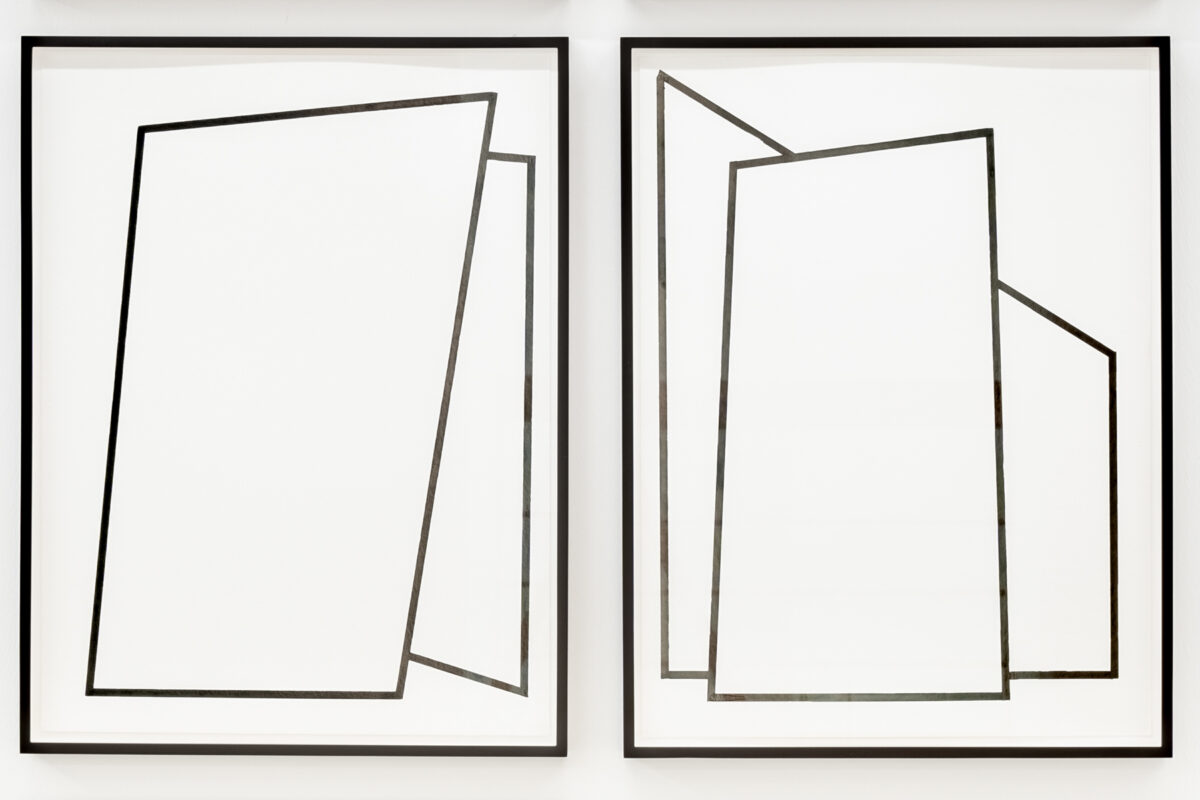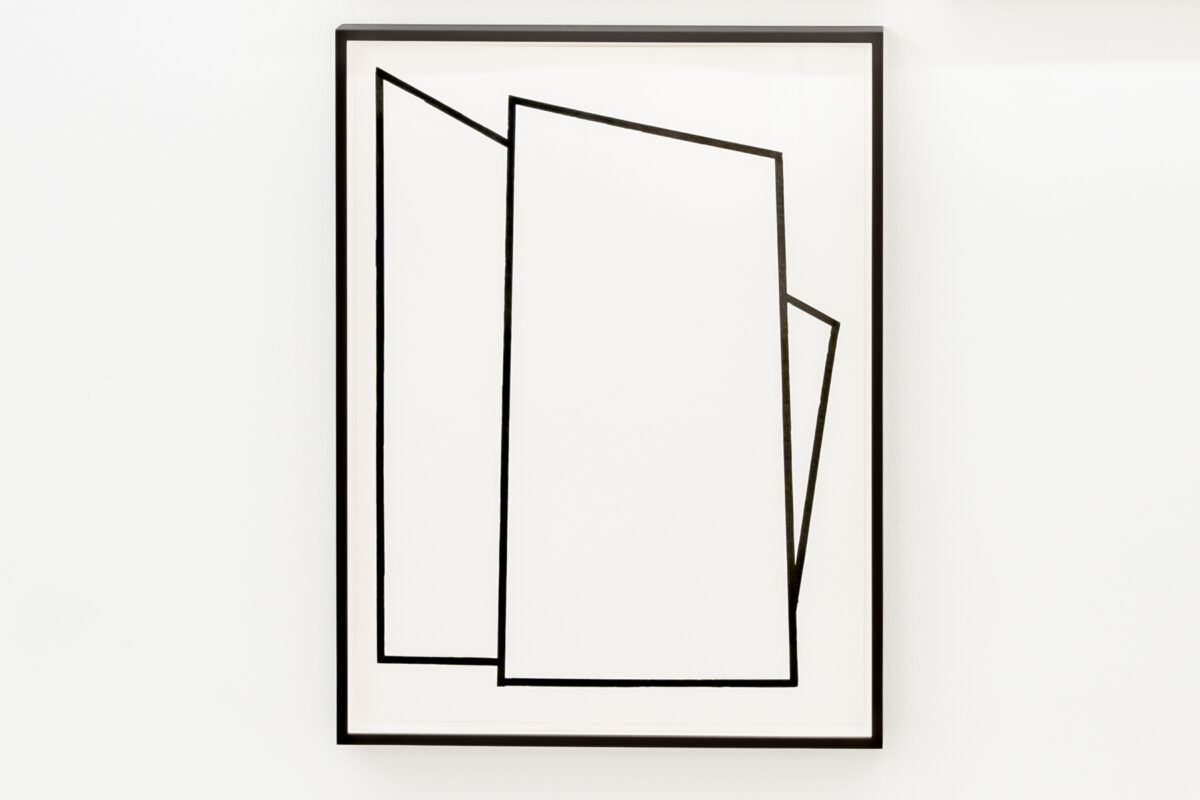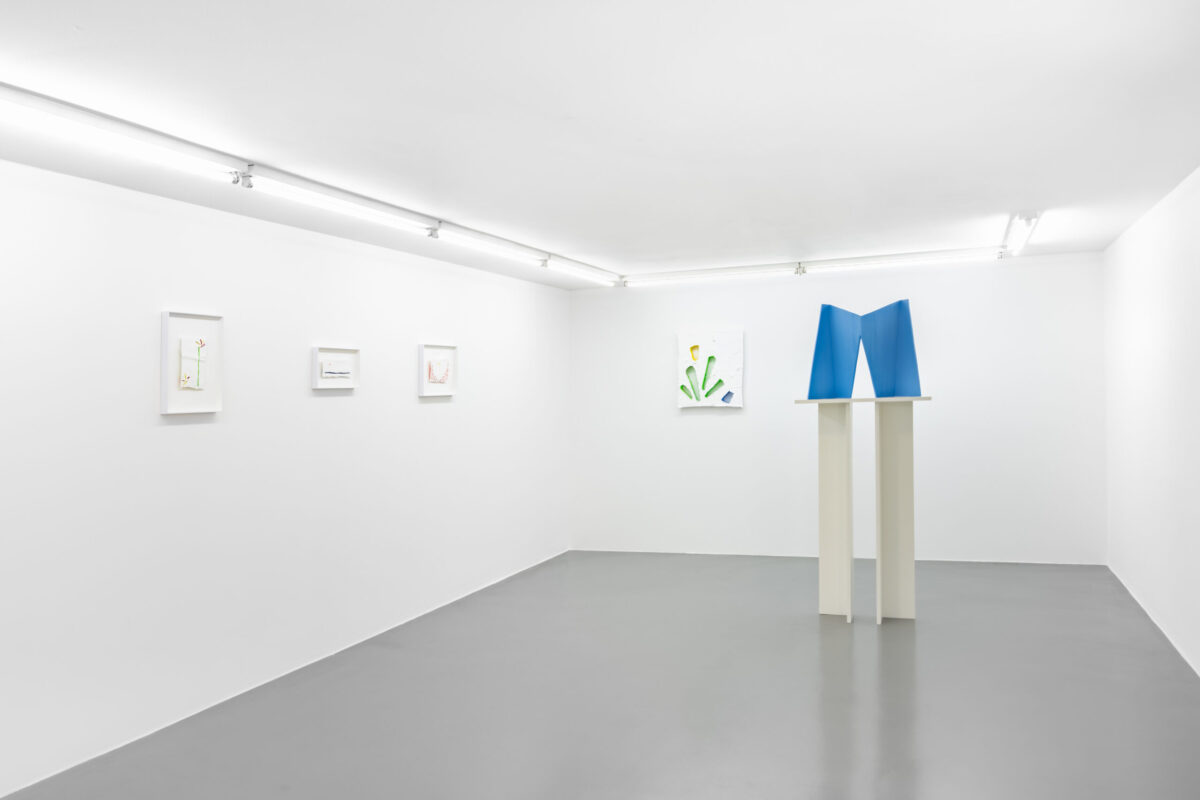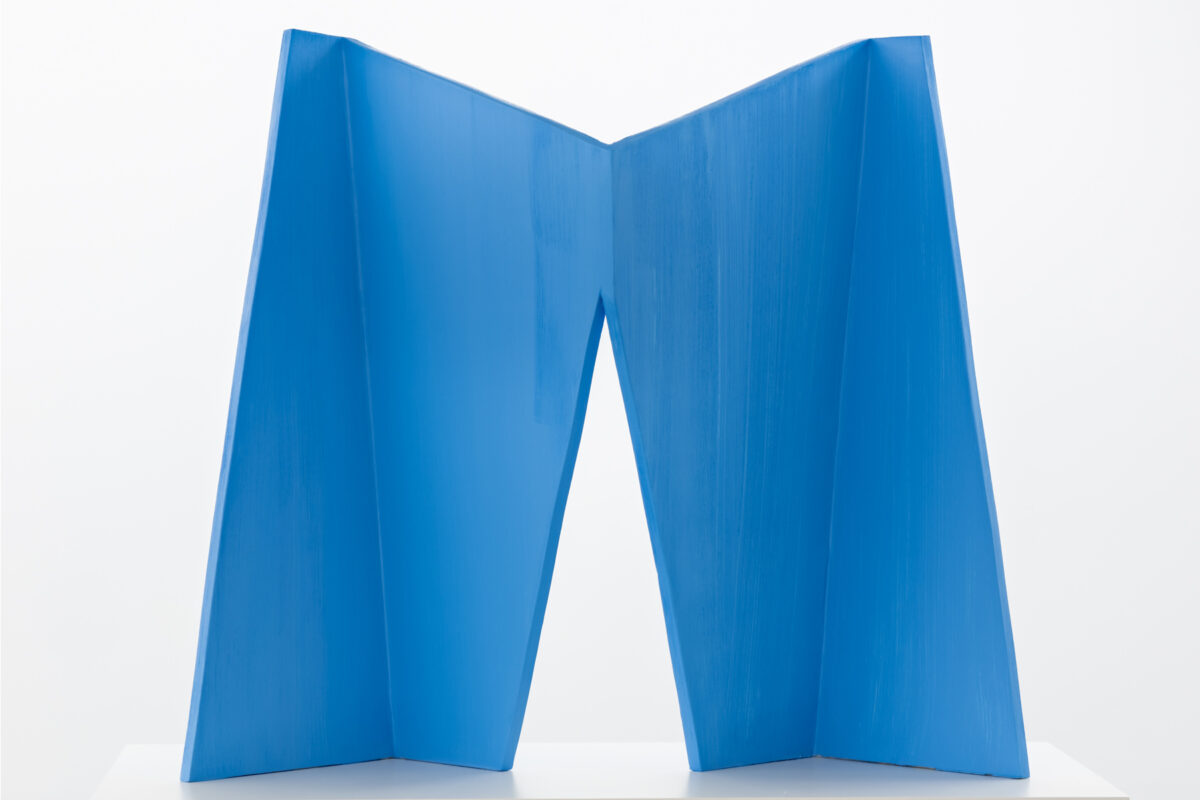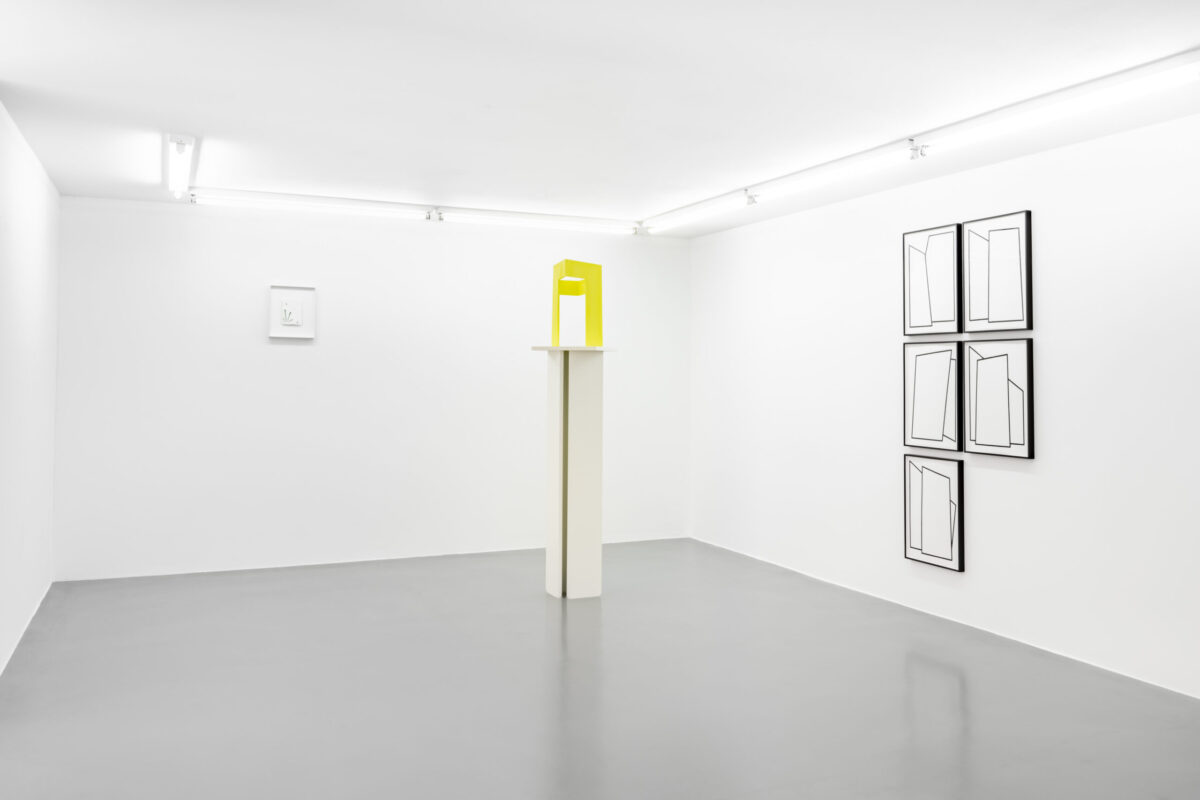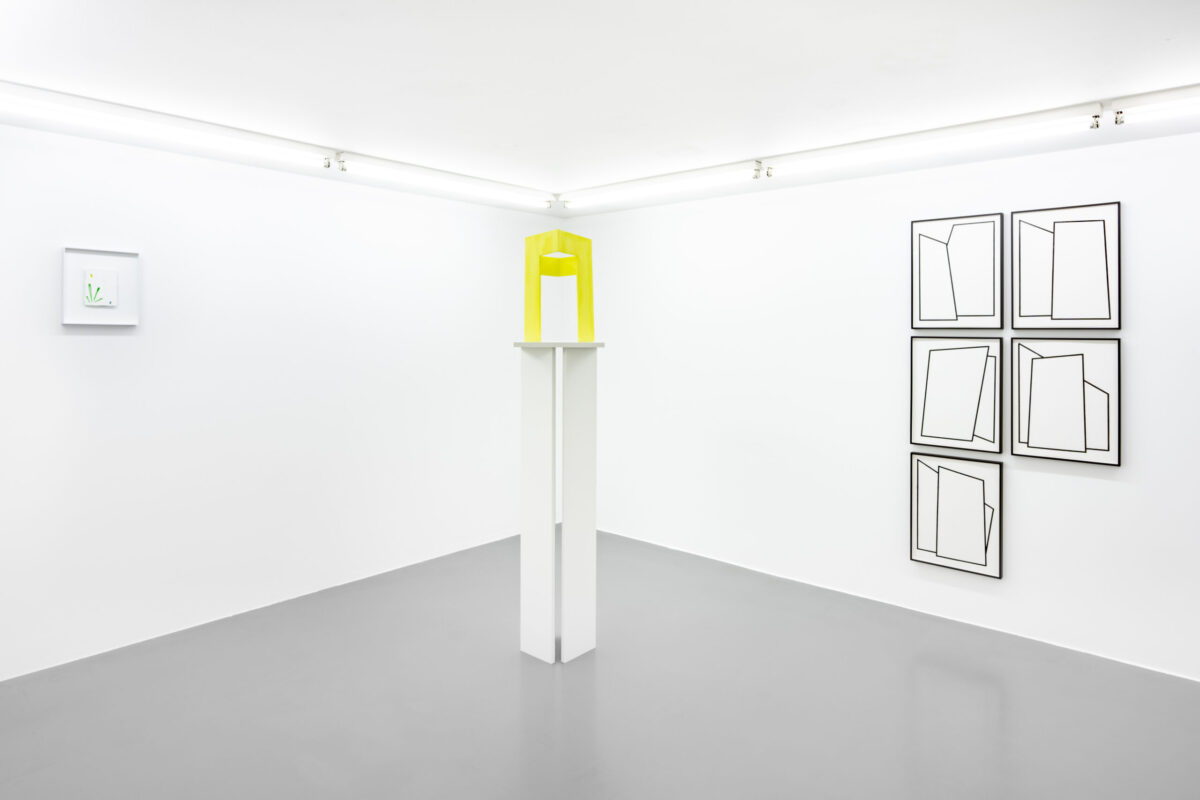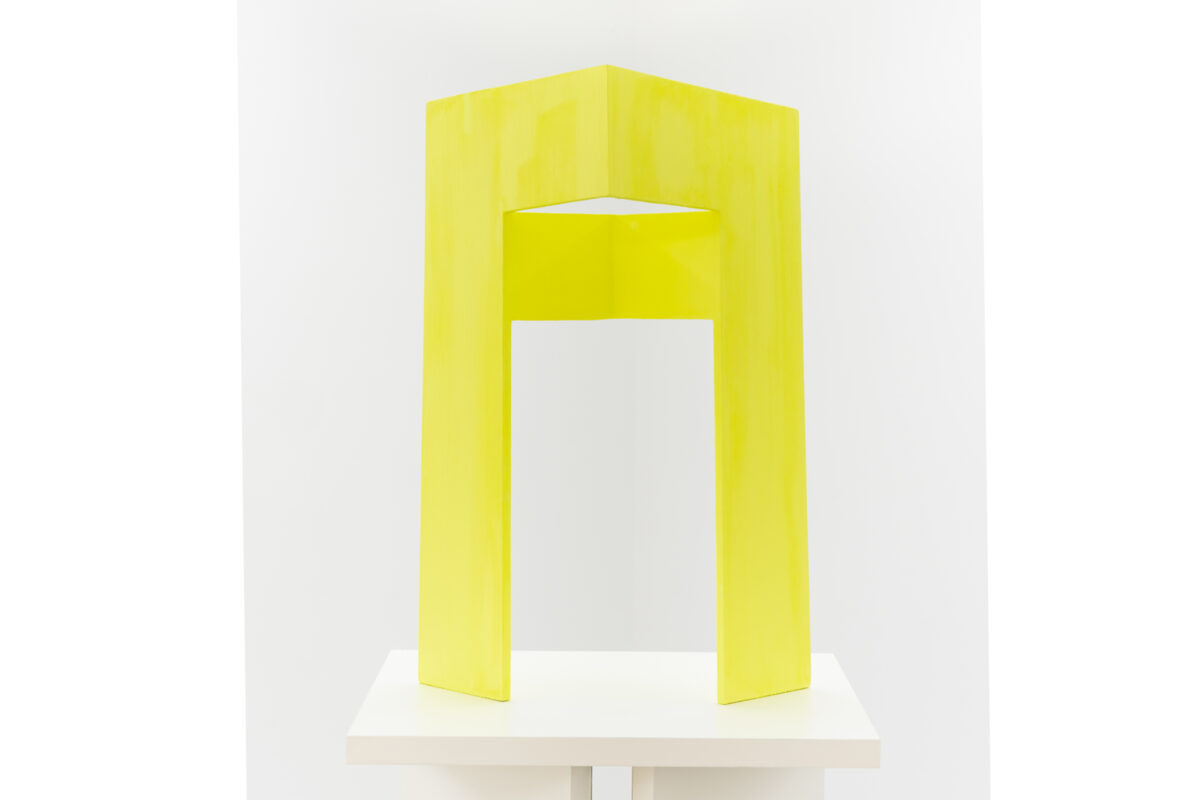Madeleine Boschan / Adrian Altintas
June 26 – August 27, 2023
Kunstverein Friedrichshafen
curated by Hannah Eckstein
photos: Kilian Bless
With the painter Adrian Altintas and the sculptor Madeleine Boschan two artistic positions come together that focus on the fundamental parameters of their genre.
The properties of form and colour are just as much in focus as the relationship between surface and body. Both regularly transcend the boundaries of their own medium in order to immerse themselves in that of the other. From the different perspectives, the question of the objecthood of the image respectively the imagehood of the object is posed. Painting and sculpture thus approach each other in the exhibition, only to return to their own origins.
Adrian Altintas‘ “Cutouts” are created from picture supports onto which he applies an uneven, white surface, thus constructing the body of the painting from within itself. In some places, hatchings and lines are inscribed in the material, in others there are cut-out shapes that reveal the view of the wall behind.
The traces and lines dictate the composition – or more – they themselves are already elementary components of this very composition, to which Altintas reacts with the cut-outs. The interior surfaces of the cut-outs are traced with clear yellow, red, blue, green, or orange and are reflected by the interplay of light and the white of the surrounding pictorial space in such a way that it is bathed in a coloured shimmer and the works take on a physical presence that oscillates between image and relief.
The cut-outs are based on organic forms that arise from the artist’s physical sensations. The bodies of the pictures take up these forms. They still feel the rectangular or square format of a classical canvas, but their sinuous, irregular edges give the image the freedom to exist outside this boundary and to manifest itself as a body of self-contained and then open surfaces.
The border areas between representation and abstraction are visibly distorted and the act of perceiving is made conscious as a process of seeing. For it is only through the composition and colourfulness of the cut-outs that appearances of reality are composed from abstract forms. What is perceived thus does not take place exclusively in the picture, but results from subjective experiences and habits of seeing. Altintas declines how something is to be represented pictorially and plastically and shows how abstract things become concrete for human perception.
Madeleine Boschan’s architectural, minimalist geometric sculptures are constituted in relation to the body and space and are both imaginary and real places for social encounters and interactions.
The sculptor has been preoccupied with the architectural principle of the portal for many years. For her, a portal – always an expression of a community – stands for the human cultural space, while opening up and closing off, has always defined our social, ethical and aesthetic spaces. Her portals can thus be understood as a semi-permeable skin of our inner cultural space verso the outer natural space.
Their titles are often borrowed from poems by poets such as E. E. Cummings and James Schuyler. Similar to a poem, they create an atmospheric space that is able to generate and influence individual moods and sensations.
The relation of their surfaces and angles suggest that the works are based on mathematical calculations. But appearances are deceptive, for they arise much more from the artist’s physical sensibility and intuition. She traces how arms open, the knee bends, the leg stretches, and physical postures and positions find themswelves in space. The clarity and geometric rigour thus develop from her subjective sense of proportion.
In the extremely painterly, coloured surfaces of the portals, a dynamic, strictly guided brushstroke can also be seen, which is created by meditatively placed movements. The interconnected lines that form self-contained surfaces must be read as an expression of the artist’s psychological as well as physical sensibility.
With the movement of the viewers in the space and the interplay of form, colour and light, the portals create a shadow play in the surrounding space. Their openings, similar to Adrian Altintas’s Cutouts, reveal the view of the space behind them and allow different axes of vision to emerge.
The three-part, walk-in sculpture “Somewhere I have never travelled, gladly beyond any experience (Parataxe)”, 2023, is composed of monochrome black and white aluminium sheets. The vertical, towering and asymmetrical forms in turn create a spherical space that is both interior and exterior in free alternation and enters into a dialogue with the surrounding architecture. The coexistence of symmetry and asymmetry unbalances the human measure as a subjective, spatial perception, so that the viewers have to redefine their own position within this structure.
Both artistic approaches thus also have a deeply human dimension that challenges the subjective perception of the recipients on different levels.
Text: Hannah Eckstein
